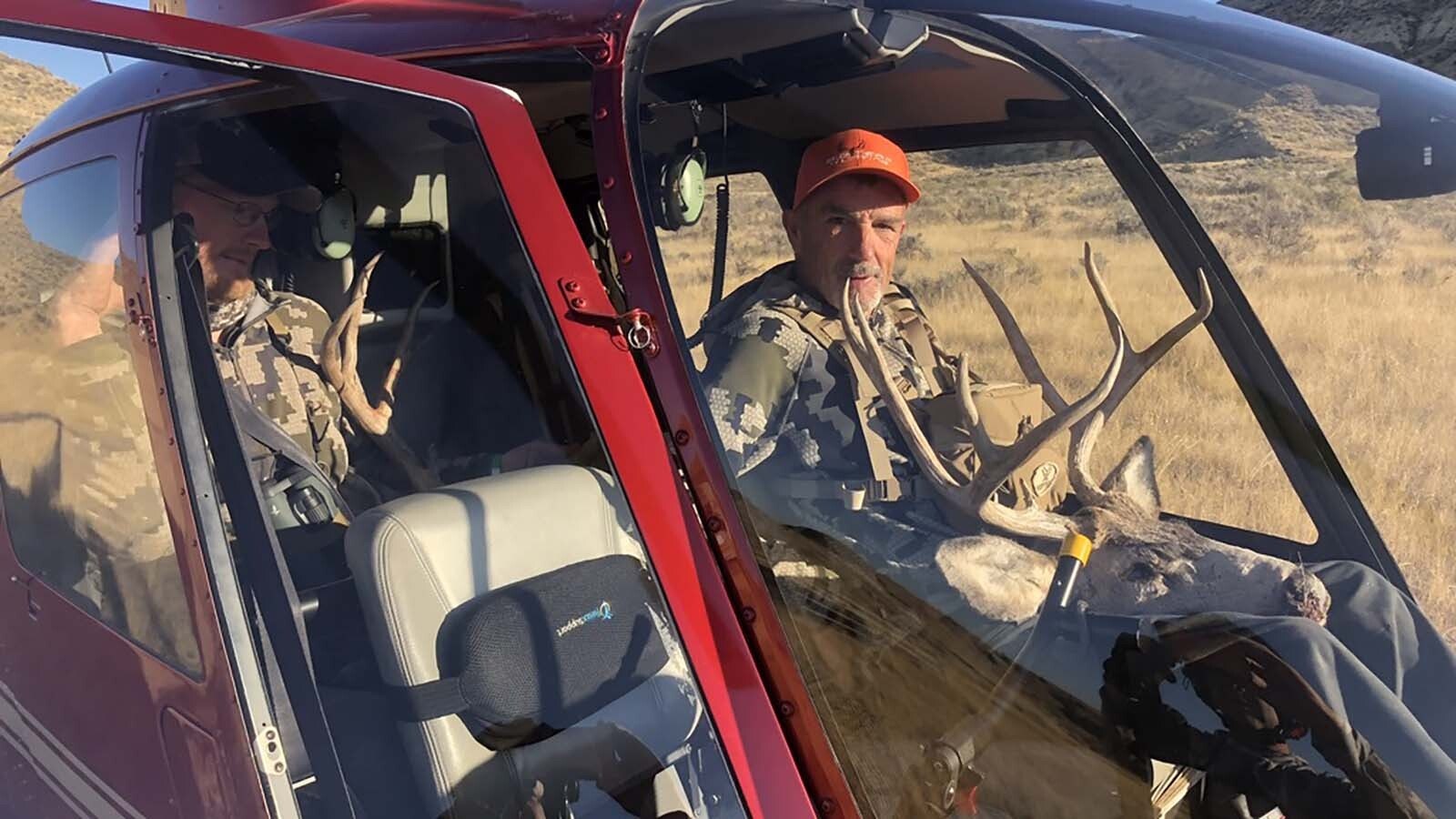Volatile Biscuit Basin in Yellowstone National Park is closed to the public for the summer tourism season as scientists continue to monitor the area after a thermal pool in the basin specatularly exploded last July.
The Yellowstone Volcano Observatory is monitoring the area's potential for more unstable upheavals before allowing people to get up close and personal with Biscuit Basin again.
Biscuit Basin has been closed since the July 24, 2024, Black Diamond Pool exploded. Because Black Diamond Pool has continued showing erratic behavior since the explosion, a static webcam was installed so scientists can catch it in the act.
“We know from seismic data and eyewitnesses that there have been small bursts from Black Diamond Pool since the big explosion last July,” said Mike Poland, scientist in charge of the Yellowstone Volcano Observatory. “The problem is that we don't have any really good observations or documentation of these events, so that’s why we installed this webcam.”
The webcam will watch the basin and catch it in the act when it decides to blow it’s top again.
It's also the only way people can visit the area this summer.

Silica Splintered
It’s been almost a year since Black Diamond Pool exploded. While many questions remain about what happened, the cause of the incredible event has been known since it occurred.
Hydrothermal explosions are caused by the energy created when water rapidly converts into steam. That was the driving force behind the July 24 explosion, but Poland said Black Diamond Pool had been building pressure within its plumbing system for quite a while.
“All of the rocks that we looked at that came out as part of that explosion showed evidence of being solidified,” he said. “They were cemented together by silica deposited out of the hot water in Black Diamond Pool.”
When silica in hot thermal water reaches the surface, it hardens into siliceous sinter, which is a mineral deposit that forms around thermal features. Poland said several rocks in Black Diamond Pool’s plumbing system had been sealed together by sinter, constricting water flow and building pressure.
“Silica is impermeable,” he said. “When you build up a layer of silica, it acts like a container, sealing pressure in. That’s what happened to drive the explosion back in July. The pool sealed itself by depositing all the silica in areas, which allowed pressure to build and eventually generate the explosion.”
The hydrothermal explosion sent water and rocks hundreds of feet into the air and destroyed the Biscuit Basin boardwalk. Several people were on the boardwalk when it happened, but no injuries were reported.
“We were fortunate that no one was injured during what was clearly a spectacular event,” Poland said.
A Pattern Of Bad Behavior
Black Diamond Pool has a history of erratic, explosive behavior since it formed after another explosive event in Biscuit Basin between 1902 and 1912. The July 24 explosion was the largest by far, but it wasn’t the first or the last documented event from the pool.
On Nov. 5, 2024, scientists were collecting gas samples in Biscuit Basin when Black Diamond Pool had another small eruption. Yet another eruption was observed Jan. 3, 2025, as a winter tour group passed the area. Both events sent mud and rocks more than 30 feet into the air.
Seismic data corroborated the two events reported by eyewitnesses. This ongoing erratic behavior prompted the installation of the Biscuit Basin webcam.
Poland said the factors that contributed to the July 24 explosion are well-understood at this time. What’s unclear is how Black Diamond Pool’s behavior has changed since that day.
“We don't have enough information to know how Black Diamond pool is going to behave going forward,” he said. “The plumbing system was blown apart by that big event, but we still don't understand what the plumbing system looks like now and how it might have evolved since that big event. That’s what the monitoring in the Biscuit Basin specifically aims to see.”
One fascinating post-explosion observation is that Black Diamond Pool’s explosive outbursts haven’t influenced the other thermal features in Biscuit Basin. Despite the intensity of the explosion, features like Jewel Geyser, Sapphire Pool and Salt & Pepper Geyser are still behaving just as they always have.
“The plumbing systems of most thermal features are individual, complex and specific to each feature,” Poland said. “None of the other features in Biscuit Basin have changed. That’s another sign that what happened was entirely confined to the plumbing system beneath Black Diamond Pool. It didn't affect any of the other features in the area.”
A Picture And A Thousand Words
The new webcam overlooking Black Diamond Pool isn’t much fun to watch. Bandwidth at Biscuit Basin isn’t great, so the camera can’t livestream like the Old Faithful webcam.
Instead, the Biscuit Basin webcam posts a new image every 15 minutes while recording a continuous stream of video. Poland said he and his colleagues can download that video via the internet or an in-person visitwhenever there’s something to see.
“If we see changes, or other monitoring (equipment) detects a change, or if someone sees something while driving by, we can download a high-resolution recording of whatever event might have occurred,” he said.
Poland said the 15-minute screenshots also share valuable insights into anything happening in or around Black Diamond Pool.
“Even static images can show us when something’s changed,” he said. “If the shoreline is suddenly wet or new rocks appear, we’ll download the video for the time period between the two images and be able to see what process occurred that drove the change we observed.”
Data-Driven Tourism
Biscuit Basin will remain closed for the 2025 summer season.
Yellowstone superintendent Cam Sholly said it will only be reopened once the Yellowstone Volcano Observatory and other scientists give the go-ahead.
“We have a plan to rapidly repair that boardwalk and restore access to Biscuit Basin,” he said during the National Parks Day lunch in Cody on May 5. “I don't have an exact timeline on that, hopefully sooner rather than later, but we don’t want to put people in there until it’s safe.”
In the meantime, Biscuit Basin is a ready-made and easy-access laboratory for studying the dynamic changes that make ever-changing Yellowstone famous.
Hydrothermal explosions aren’t uncommon in Yellowstone, but they usually happen in backcountry areas with no webcams and where accessibility is difficult. Biscuit Basin is easy to get to, so there’s a wealth of knowledge yet to be gained by keeping it under video surveillance.
“In the backcountry, we might find evidence of hydrothermal explosions months or years after they occurred,” Poland said. “Having such a well-recorded event, and then being able to map out all the ejecta and use that to put the story back together, is a wonderful opportunity for understanding how this kind of activity happens, and being able to monitor the post-explosion changes is another rare opportunity.”
Poland said the Biscuit Basin webcam will be essential in determining when the area reopens to the public. Once geologists have an idea of how Black Diamond Pool is behaving, they’ll relay everything they’ve learned to Yellowstone’s management staff.
“The park has to make an assessment about the hazards for that area, and then they've got to decide what they're going to do with the boardwalk,” he said. “There are a lot of different options they have to consider, but they need the data to be able to help them make that choice. Part of our responsibility is to provide the data that will help make an informed decision.”
Contact Andrew Rossi at arossi@cowboystatedaily.com

Andrew Rossi can be reached at arossi@cowboystatedaily.com.





